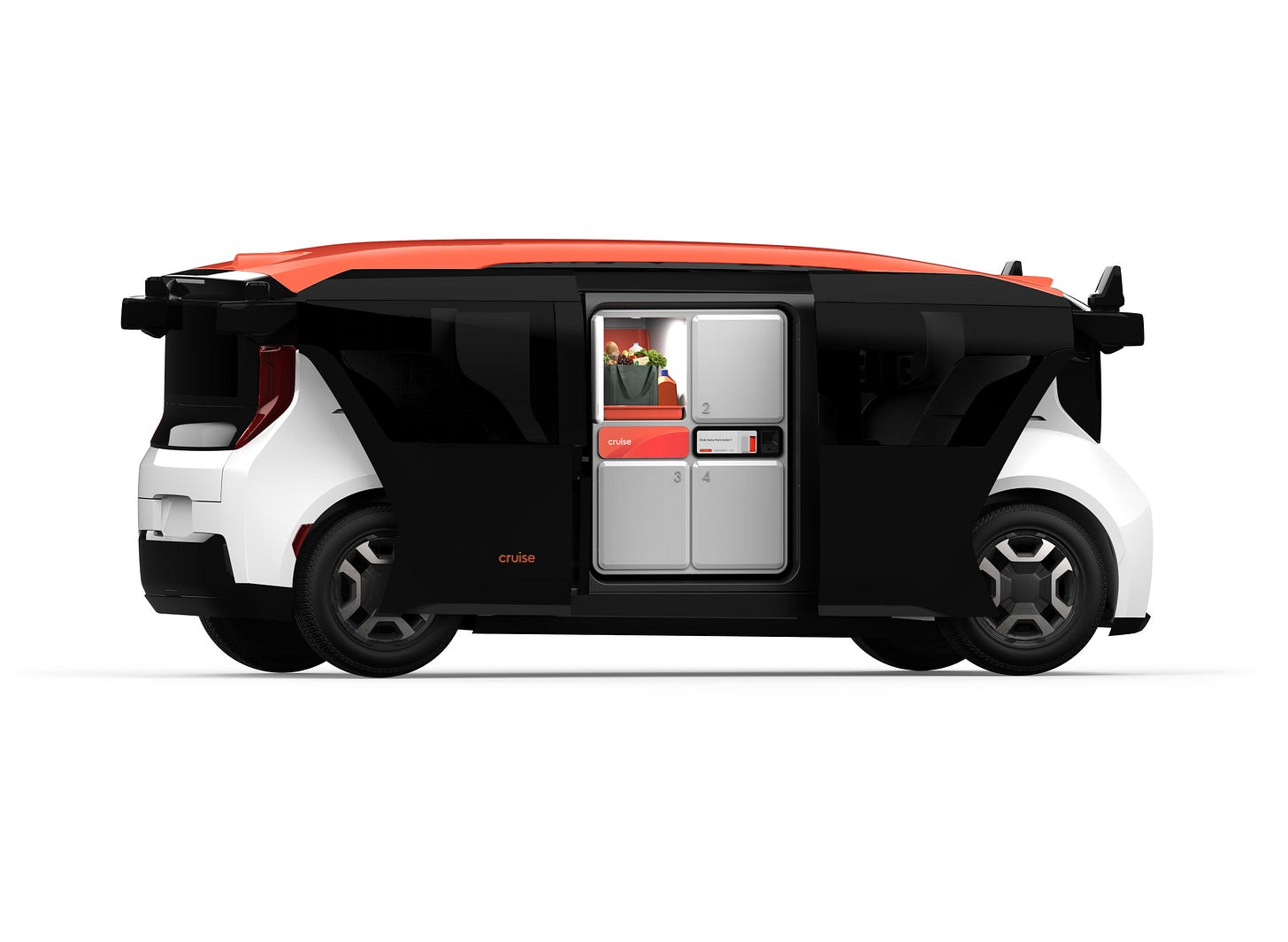Let’s say you call in an order, but want to head to the restaurant or store to grab the item yourself… Why is it that if it’s a restaurant, it’s a “takeout” order, but if it’s a grocer or retailer, you’re doing a “pickup?” While you’re pondering that, we’ve got some relevant stats to share, plus more bad news for virtual restaurants and AV deliveries. Oh, and an interesting new video trend is emerging in China.
Today:
Uber Eats Fries 8,000 Virtual Restaurants
Waymo, Cruise, TuSimple & AV Transport in Trouble
Chart Time | Pickup Up, Delivery Down
Live Video Powers Delivery Growth in China
VIRTUAL BRANDS | Uber Pulls Plug on 8,000 Ghost Kitchens
Last week it was bad news for the marquee brands of the ghost kitchen world, as Red Robin and VDC announced a split-up. Now it looks like the tables are turning for the little guy as well: Uber Eats announced it was culling over 8,000 virtual restaurants from its marketplace. The move looks to cut-down on lookalike menus, as now virtual restaurants must offer food that’s 60% different from that of its “host” restaurants (the number is 50% on competitor DoorDash.)
The Big Picture: While this may be bad news for crafty restaurateurs, it’s a welcome development for consumers and the 3PDs. The number of virtual restaurants on Eats more than doubled over the past year (to about 40k) as the marketplace got filled with spammy listings. It’s a bit reminiscent of the old days of SEO and Google optimization, where websites would cram as many keywords onto a page, to hope they showed up at the top of your search. In the same way, restaurateurs are creating dozens of listings for the same dishes, just hoping one would catch your eye before you’ve scrolled too far down the results page. Overall, this axing is a net-positive.
AUTONOMY | TuSimple, Cruise, Waymo Hitting Bumpy Road
It’s been a tough few days for autonomous vehicles; even those oriented towards carrying goods are seeing signs that look bad. In California, Cruise and Waymo are feeling the heat from city officials in SF, who are inveighing against the self-drivers in the hopes of getting state regulators to slow down the startups’ expansion. The state appears to be listening. Things aren’t looking so hot in Arizona either, as self-driving truck startup TuSimple has laid off essentially its entire team, as it retrenches to the China market.
The Big Picture: While Waymo and Cruise are mostly associated with ferrying passengers, the companies have made clear they have delivery ambitions as well. Waymo recently announced a partnership with Uber Eats in Phoenix, and has been tinkering with trucks as well. Cruise in turn has worked with Walmart on grocery deliveries. If the CPUC smacks the startups down, don’t expect it to spare their delivery arms…
CHART TIME | Meal Kit Delivery Loses Steam
The latest figures for online grocery shopping are out, and it shows that growth has cooled as consumers remain wary about higher prices. While monthly users and AOV have inched up, the average number of orders per customer is down 5% YoY. The biggest loser is ship-to-home (think meal kits and dry goods) — which you can also see in Blue Apron’s languishing stock price. In-store pickup has seen growth, as consumers look to avoid delivery fees, but it hasn’t been enough to pick up all the slack.
MARKETING | Live Video Makes Delivery Pop in China
Chinese delivery players Meituan and Douyin continue to duke it out for marketshare; both are now turning to an interesting strategy — video — to win over merchants and consumers. As Douyin is essentially the country’s souped-up version of TikTok, its video ambitions are obvious, but Meituan also sees that letting brands livestream can boost online sales. Starbucks saw video content for Frappuccinos increase sales a whopping 370% YoY.
The Big Picture: Entertainment, shopping, and transport apps often see rapid innovation in China, as each program races to become an all-in-one “super app.” Douyin is no exception, as it's glommed new features onto its video sharing platform, teaming up with players like JD.com and Alibaba to fulfill food delivery orders in-app. Much as TikTok took off in the U.S. after learning from the Chinese market, there’s an enormous opportunity for American and European 3PDs to lean into this live video trend to boost growth.
A Few Good Links
Hawaii DoorDash driver pulls in $114k. WSJ details how retailers are turning from delivery to pickup in bid to slash costs. 7-Eleven looking for new brands to stock. India’s Swiggy acquires retail logistics startup LYNK. Ford cuts price of EV pickup.
Got a tip, feedback, or just want to say hi? Reply back to this email.





